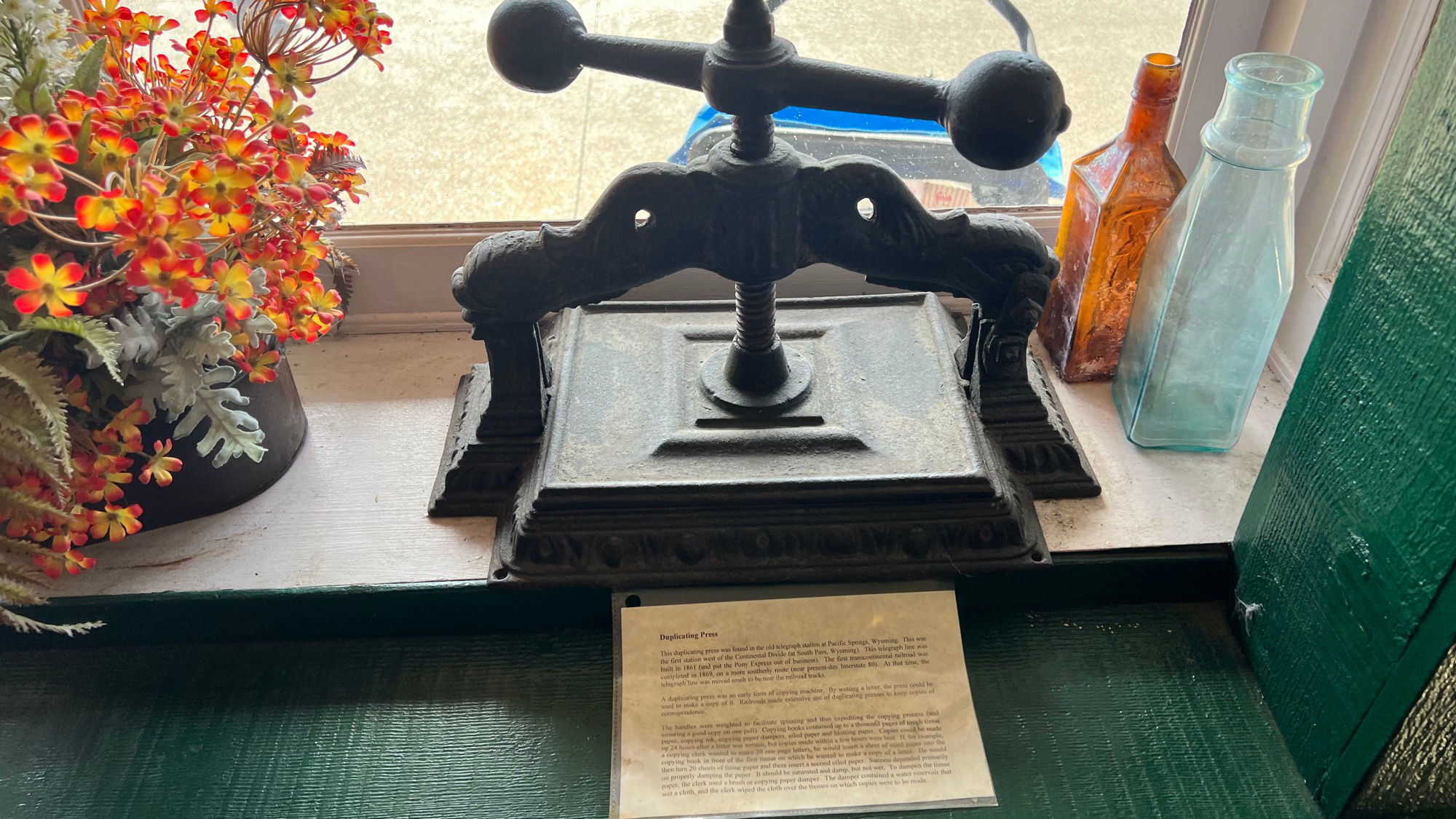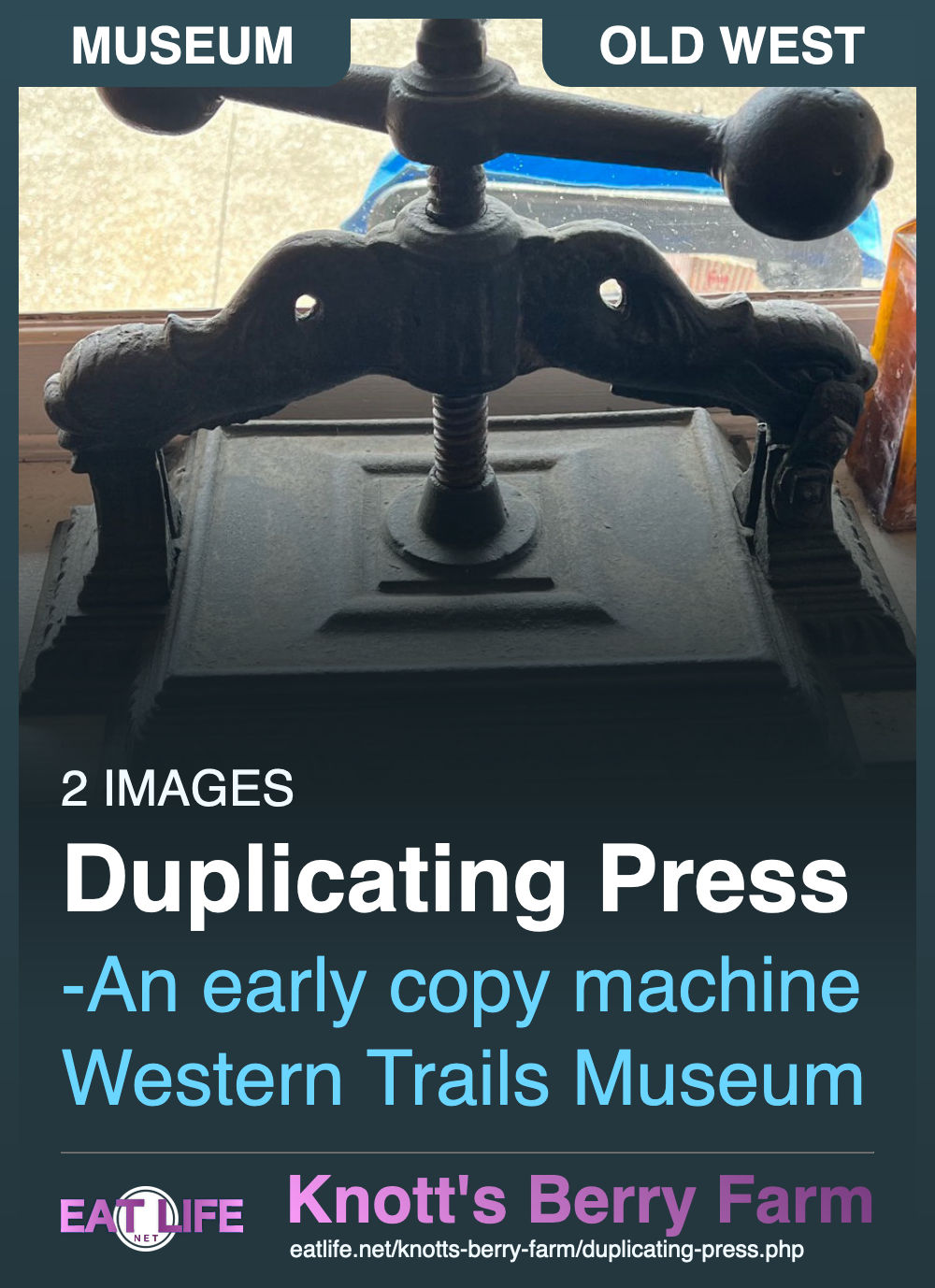Amusement Park Essentials
Snoopy T-Shirts Snoopy Stuffed Animals Knott's Raspberry Cookies
As an Amazon Associate we earn from qualifying purchases

This duplicating press was found in the old telegraph station at Pacific Springs, Wyoming. This was the first station west of the Continental Divide (at South Pass, Wyoming). This telegraph line was built in 1861 (and put the Pony Express out of business). The first transcontinental railroad was completed in 1869, on a more southerly route (near present-day Interstate 80). At that time, the telegraph line was moved south to be near the railroad tracks.
A duplicating press was an early form of copying machine. By wetting a letter, the press could be used to make a copy of it. Railroads made extensive use of duplicating presses to keep copies of correspondence.
The handles were weighted to facilitate spinning and thus expediting the copying process (and ensuring a good copy on one pull). Copying books contained up to a thousand pages of tough tissue paper, copying ink, copying paper dampers, oiled paper and blotting paper. Copies could be made up 24 hours after a letter was written, but copies made within a few hours were best. If, for example, a copying clerk wanted to make 20 one-page letters, he would insert a sheet of oiled paper into the copying book in front of the first tissue on which he wanted to make a copy of a letter. He would then turn 20 sheets of tissue paper and there insert a second oiled paper. Success depended primarily on properly damping the paper. It should be saturated and damp, but not wet. To dampen the tissue paper, the clerk used a brush or copying paper damper. The damper contained a water reservoir that wet a cloth, and the clerk wiped the cloth over the tissues on which copies were to be made.








